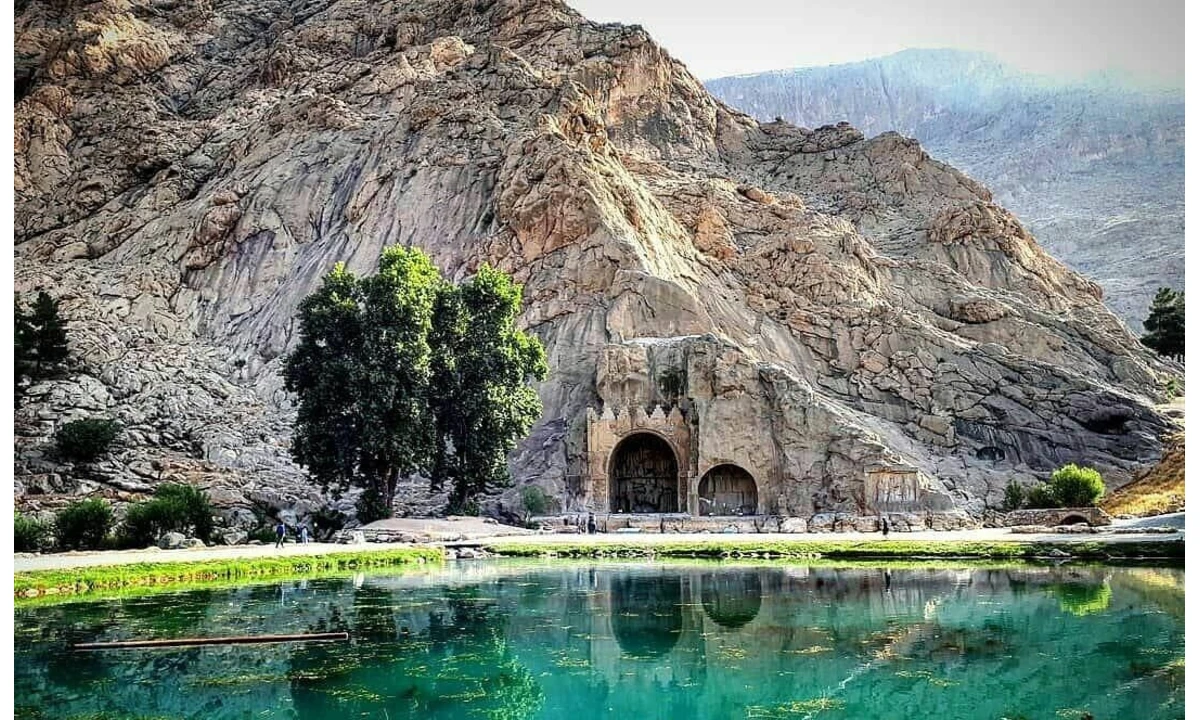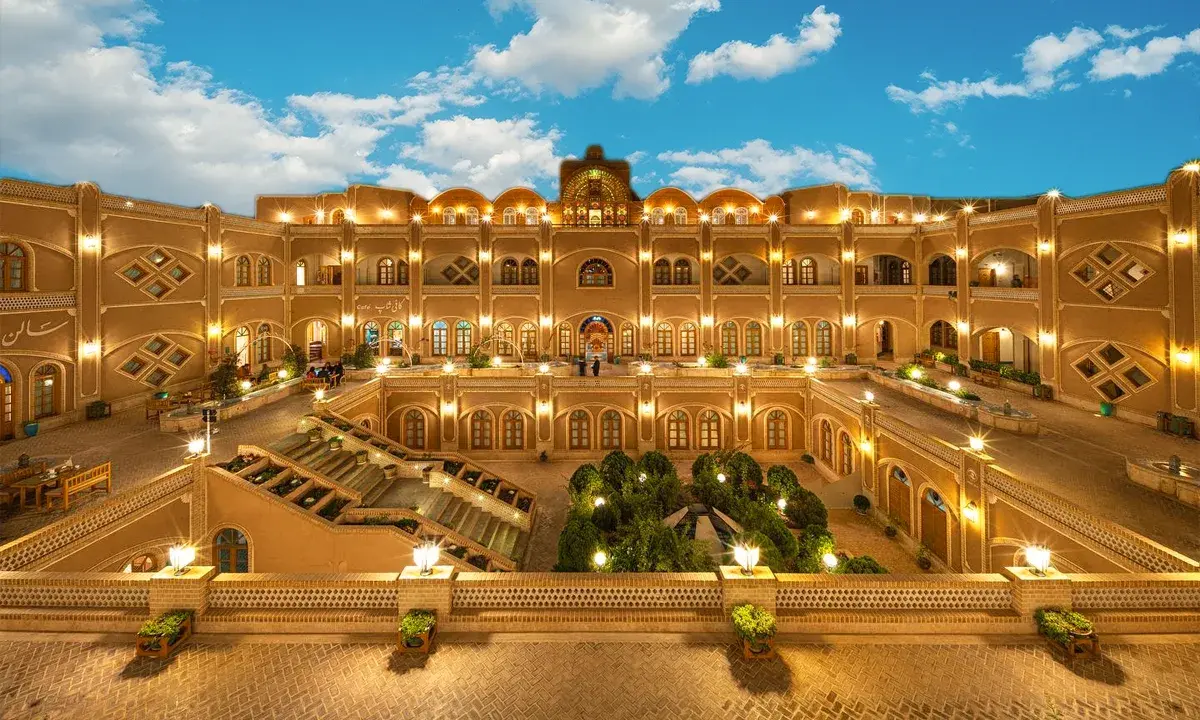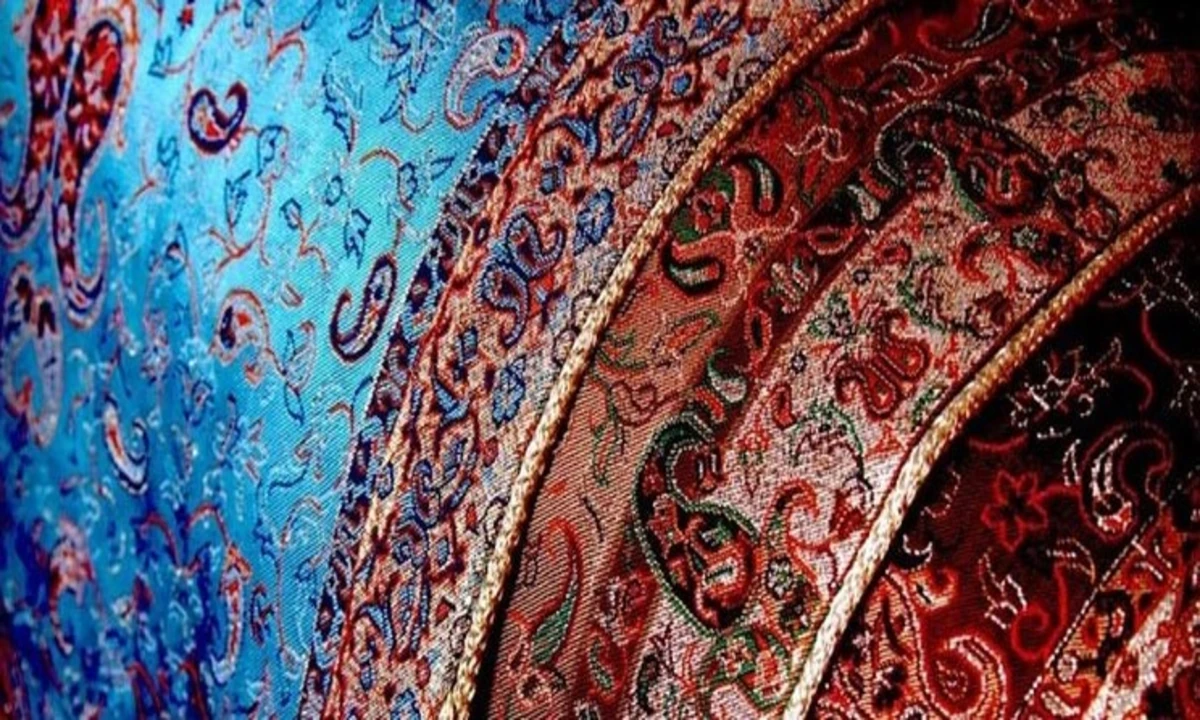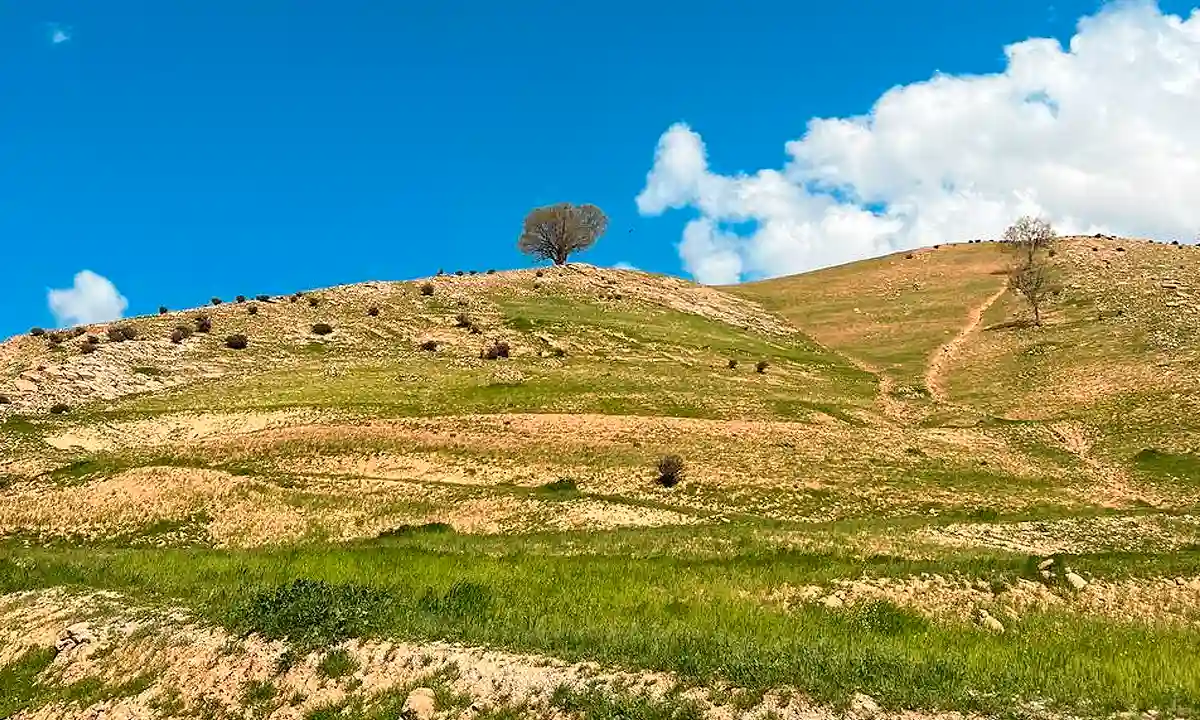Discover Si-o-se-pol Bridge in Isfahan, Iran
![]() Author : shiva | Date : Saturday 30 November 2024 13:57
Author : shiva | Date : Saturday 30 November 2024 13:57

The Si-o-se-pol Bridge or the bridge of Allah Verdi Khan is one of the historical bridges of the province of Isfahan with a length of 295 meters. The bridge was built on the orders of Allah Verdi Khan Ondiladze on Zayandehrud.
Si-o-se-pol Bridge is one of the historical monuments of Isfahan province, many of us know this beautiful city with this historic bridge. though today, with drying water, the Si-o-se-pol Bridge is no longer as impressive as in the past, this bridge is still known as one of the symbols of the city of Isfahan. If you know more about Iran, you will get acquainted with Iran's tourist places.
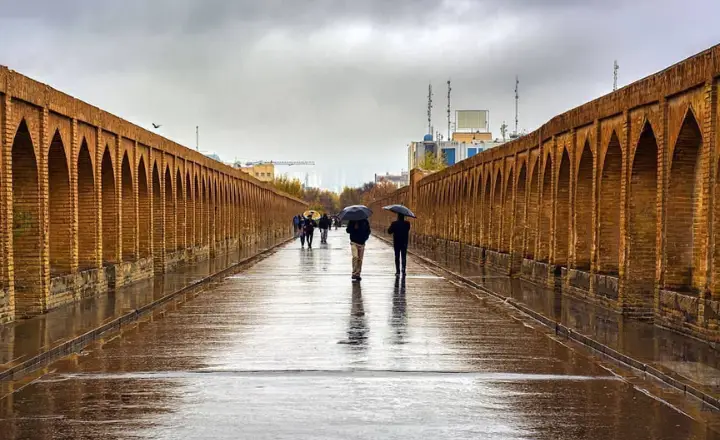
The first idea of the construction of the Si-o-se-pol Bridge in the year 1008 AH is the 12th anniversary of the reign of Shah Abbas I. The bridge was completed in 1011 AH under the supervision of Allahvardi Khan.
Si-o-se-pol Bridge Through the Ages
| Why It Matters | Fixes & Upkeep | What Happened | Era |
|---|---|---|---|
| Showcased the peak of Persian architecture and became a central hub in Isfahan. | Initial touch-ups to keep it majestic. | Built by Shah Abbas I, it quickly became Isfahan's pride. | 1600s |
| Turned into a cultural hotspot, hosting numerous social events and gatherings. | Minor tweaks to combat wear and tear. | Became the town's favorite meetup spot. | 1800s |
| Declared a national treasure, reminding everyone of Iran's rich history and heritage. | Major restoration to strengthen its bones. | Faced the modern age as Isfahan expanded. | 1900s |
| Bridges the past with the present, offering a picturesque glimpse into Persian culture and tradition. | Regular check-ups to ensure it stands strong. | Attracts visitors worldwide with its beauty and history. | Today |
The architecture of the Si-o-se-pol Bridge
The architect of Si-o-se-pol Bridge was the master Hussein Bana Isfahani, whose son made masterpieces like Sheikh Lotfollah Mosque. Esfahani proposed the construction of a big bridge to construct bridge, but the idea was not discussed before.
Contrary to the fact that bridges are usually built-in low-profile areas, he built the bridge to make the wider part of the Zayandeh-rud River, as this river section was built in shallow, broad, quiet surroundings with a spectacular outlook. Three major types of materials have been used to build the bridge: stone for the lower parts and brick and mortar and plaster for the upper parts.

Sarouj is one of the oldest Iranian architects' initiatives that consists of clay, limestone, ash, and linseed materials (eggs and peaches), and are made in special stages. According to experts from the Department of Geology and Cultural Heritage, the foundation and foundation of this bridge are made to increase its moisture, durability, and strength, which is why in the long run water can not be damaged.
✔️Read More : Discover the Ali Qapu Palace in Isfahan
Si-o-se-pol Bridge Visiting Hours and Best Seasons
- Visiting Hours: Open 24 hours, with the best light for photography in the early morning or late afternoon.
- Best Seasons:
- Spring (March to May): Mild temperatures, nature in bloom.
- Autumn (September to November): Pleasant weather, fewer crowds, beautiful fall colors.
- Summer (June to August): Warm, visit in the early morning or late evening.
- Winter (December to February): Cold, potentially snowy, yet picturesque.
- Address: Si-o-se-pol Bridge is located on Zayandeh River, Enghelab Sq., Chaharbagh Abbasi St., Isfahan, Iran.
- Ticket Prices: Access to Si-o-se-pol Bridge is free of charge. There are no ticket prices for visiting the bridge itself, making it an accessible attraction for everyone at any time of the year.
✔️Read More : Khajoo Bridge - Icon of Isfahan Historical Bridges, Iran plus Photos & Location
The lost beauties of Si-o-se-pol Bridge
Of course, for many years, the zayandeh-rood river has had no water, and may have diminished the beauty and grandeur of this bridge, but still many tourists are fascinated by its architecture and glory.
When the Zayandeh-rood River was full of water, people would go boat riding to Si-o-se-pol Bridge.
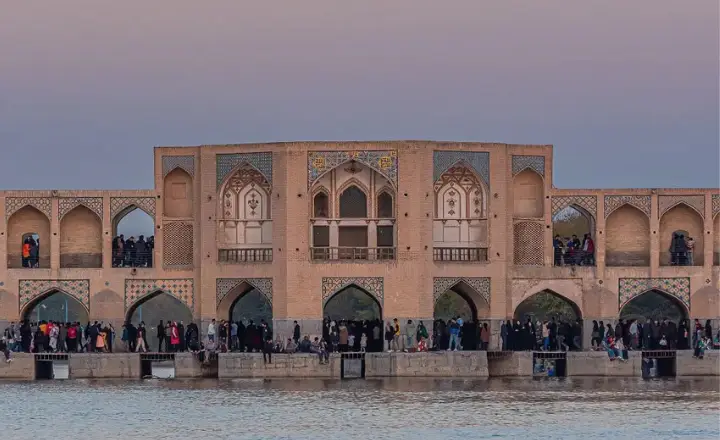
Entertainment near Si-o-se-pol Bridge
You can go to cafes and restaurants around the bridge and create delicious moments for yourself. The green area beside this bridge is a great destination for the residents and guests of this city and you will always see a large crowd there. If you see there is a musician or a singer's bridge, do not be surprised, this is the Si-o-se-pol Bridge night that makes everyone feel full of feelings.
Just sit near the sunset so you can enjoy walking on the bridge and watching the sunset landscape, and share the happiness of the people who are gathered together and pride themselves.
✔️Read More : Isfahan Travel Guide 2024 | Things to Do in Isfahan
visitor experience ratings for the Si-o-se-pol Bridge
| Comments | Rating in TripAdvisor | Aspect |
|---|---|---|
| A beautiful, memorable and historical space. Its beauty is more at night. I hope Zayandeh Rood is full of water when you visit it | 5 Stars | Scenic Beauty |
| Construction of Si-o-se pol Bridge began in 1599 and ended 1602. Bridge is long 298 meters,13.75 meters wide and it has 33 spans from which it gets its name with the longest span of 5.6 meters. It crosses Zayandeh River and is very popular among local people. | 5 Stars | Cultural Value |
| Easy to reach by public transport, though the area can get quite crowded. | 4 Stars | Accessibility |
| there isn’t much there if you don’t bring anything with you. Off the river walk there are lots of cafes, shops and restaurants, but on the walk itself it’s pretty much just that, a walk. | 3 stars | Visitor Facilities |
| There is so much to see in there! To make the most of your time book an educated tourguide with excellent language, knowledge and interpersonal skills with years of experience. | 4 stars | Guided Tours |
| This bridge is clearly a great favourite with locals, many of whom congregate there to take photos, meet, have picnics and cool down by wading in the shallow waters. | 4.5 Stars | Overall Experience |
Interesting Tips
- Si-o-se-pol Bridge, in addition to its enchanting beauty, is known as the longest bridge on Zayander Rood.
- There are many theories about the special architecture of the Si-o-se-pol, one of which has links to the Georgian Allahvardi Khan and 33 bridge spans. The Georgian alphabet has 33 letters, and Allahvardi Khan was a Georgian descendant, and therefore built the bridge with 33 craters.
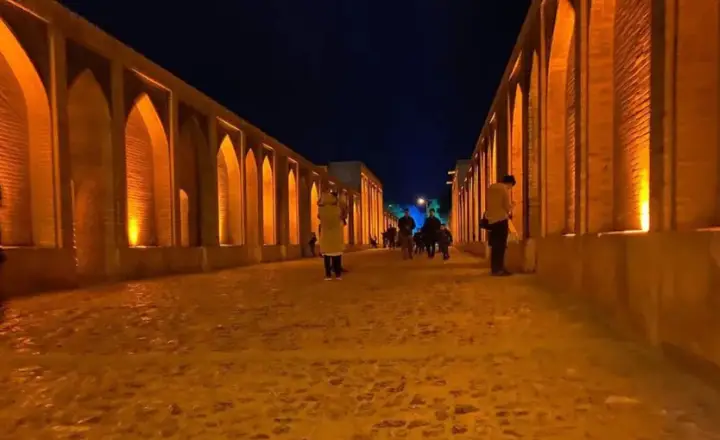
- During the rule of Shah Abbas, the main plan of the city of Isfahan was Chaharbagh, which was divided into two vertical axes. Si-o-se-pol Bridge was located along one of the main axes to connect Charbagh Abbasi to Chaharbagh, the Garden of Hazar Jarib, Abbasabad, and the Jolfa neighborhood.
- As we mentioned, during the rule of Shah Abbas, Si-o-se-pol Bridge 40 had spans, and over time, with the cultivation of trees and the diversion of water, some of the craters were abandoned. In 1330, Mostafa Khan Mostofi, "mayor of Isfahan", liberated the land around the bridge and, after opening the water passageway, built a stone wall on the north side of the bridge that still has its remains.
✔️Read More : TOP Iran Mosques | The Most Beautiful Mosques In Iran
Last Word
The Si-o-se-pol Bridge is not only a remarkable example of Safavid architecture but also a symbol of Isfahan's historical and cultural richness. Built on the orders of Allah Verdi Khan and masterfully designed by Hussein Bana Isfahani, this bridge exemplifies the architectural ingenuity of its era. Despite the challenges posed by the drying of the Zayandehrud River, Si-o-se-pol continues to captivate visitors with its enduring beauty and grandeur. It's a place where history converges with the present, offering a unique blend of architectural splendor, historical significance, and cultural vibrancy. The Si-o-se-pol Bridge remains a must-visit landmark for anyone seeking to experience the essence of Isfahan and the timelessness of Persian art and architecture.


